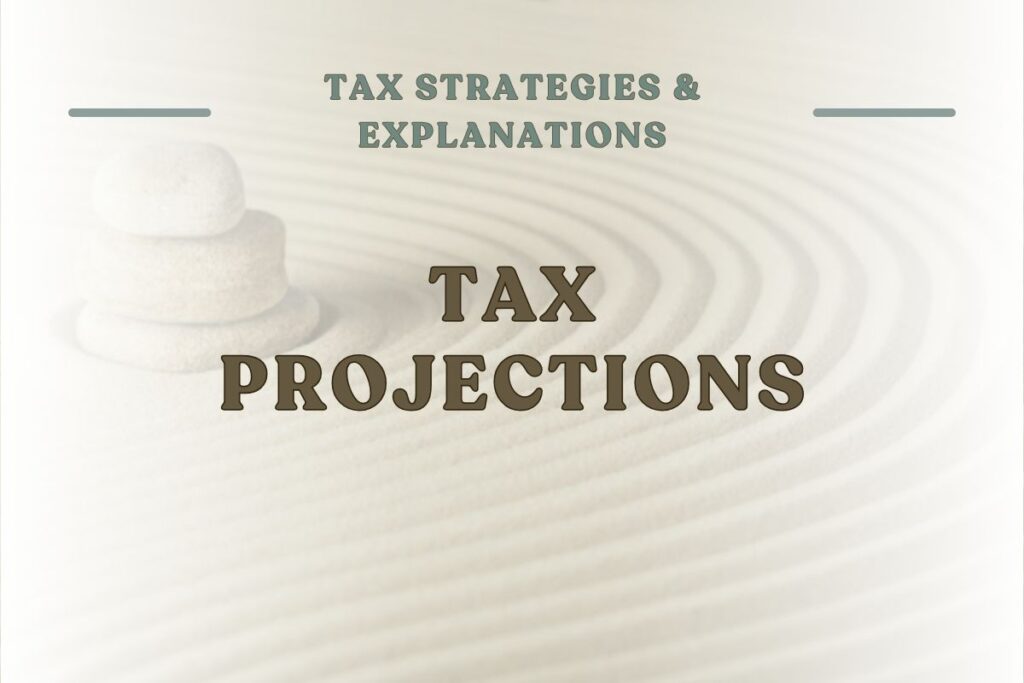Tax Projections: Why December 31st Matters More Than April 15th

For many private practice owners, April 15th looms large as the be-all, end-all of tax season. However, there’s an often-overlooked date that’s equally (if not more) critical when considering tax strategies for private practice owners: December 31st. This is the final chance each year to make strategic moves—like adjusting income and expenses, taking bonuses, or finalizing major practice investments—that can substantially reduce your upcoming tax bill.
For mental health professionals, private practice tax planning becomes especially crucial as year-end approaches. By the time the clock strikes midnight on December 31st, the window to impact that year’s taxes is largely closed. In other words, waiting until April means you’ve lost your best chance to shape your financial future.
Understanding Tax Projections
Most traditional CPA or bookkeeping work is done retroactively, focusing on financial data from the past.
A tax projection, on the other hand, is a forward-looking analysis that helps you determine if you’ll owe money on April 15th and whether you have opportunities to lower your tax liability ahead of time. Think of it as a preview of your tax situation, but before the year is over.
Key Benefits:
- Strategic Adjustments: If a projection indicates a higher-than-expected burden, you still have time to modify your approach. This could include adjusting income timing, ramping up retirement contributions, or purchasing tax-deductible items that you’ve been putting off.
- Financial Preparedness: Even if you can’t fully avoid a tax bill, you’ll have more time to save for it—helping you avoid cash flow crunches.
The Critical December 31st Deadline
Unlike April 15th, which you can often extend, December 31st is unmovable. After this date, most of your financial transactions lock in for that year, impacting private practice tax planning in ways that can’t be undone. For private practice owners—especially mental health practitioners—this cutoff is crucial.
- Time Major Purchases Strategically: Upgrading office equipment or renovating your practice space could yield significant deductions—but only if you finalize those decisions before year-end.
- Optimize Owner Compensation: If you’re considering a year-end bonus for yourself or your employees, a tax projection can reveal whether this move will benefit or hurt your financial standing.
- Any retirement plan contributions that get deducted from your paycheck (e.g. 401k, Simple IRA) must be done prior to December 31.
Navigating Projection Challenges
Unlike traditional tax preparation—where you have all the final numbers in hand—projections rely on estimates and assumptions. That’s why it’s best to:
- Start Early: We recommend November or early December for year-end tax planning and projections. By then, you’ll have enough of the year’s financial data to make a realistic forecast, yet still have time to adjust expenses, bonuses, or retirement contributions before the deadline.
- Stay Realistic: Overly optimistic or pessimistic guesses can lead to inaccurate results.
Building a Stronger Financial Future
Practitioners often stay laser-focused on client care and growth. That’s admirable—but neglecting year-end tax planning can lead to financial surprises that undermine the very stability you’re trying to provide. Make sure your CPA is proactively looking at your tax position before December 31st. This will help you:
- Identify hidden tax-saving opportunities
- Sidestep unexpected bills that can strain practice finances
- Lay a foundation for ongoing prosperity and peace of mind
Take Action Now
Don’t let December 31st slip by without a plan. Make sure your CPA (ideally, a good CPA) is performing a thorough tax projection that’s specifically tailored to your practice’s numbers. If they’re not initiating these discussions, it may be time to seek a more proactive accounting partner.
Stay ahead of the tax curve, reduce last-minute stress, and set your practice up for sustainable success.
